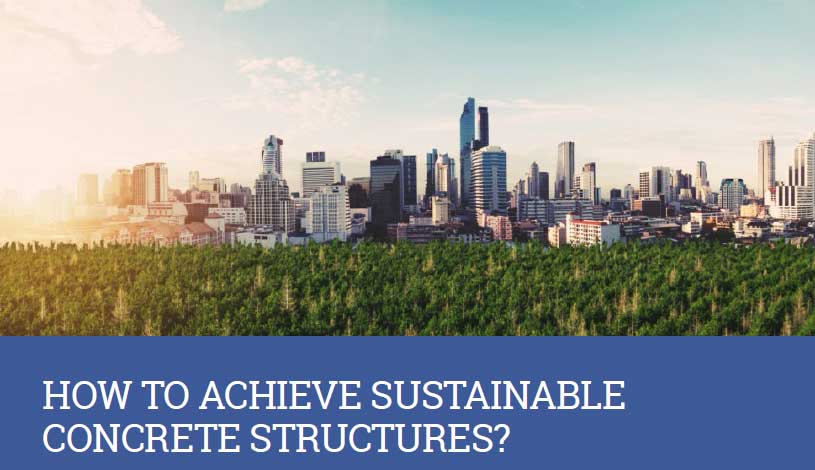HOW TO ACHIEVE SUSTAINABLE SUSTAINABLE CONCRETE STRUCTURES?
Interview to: Kevin Yuers of International KrytonApril 2022 edition

There might be several ways to build a sustainable form but possibly, you ask yourself what is the best way of doing it for you and your project.
In the concrete industry, this concept must be clear. After all, there are many in the industry demanding methods that ensure sustainable construction. And many more who are establishing their own paths to reach Zero Emissions in concrete for 2050.
How big you is your carbon footprint?
In order to see light over these questions and more, we have interviewed the Product Development Vice President of KRYTON, Kevin Yuers.
World Construction: Thank you for being with us Kevin! Let’s start defining how the construction becomes sustainable, including concrete structures.

Kevin Yuers: It means making two things right. In the first place, it must be built from the beginning with less carbon footprint. In second place, the result must be structures that last in every design without having to be replaced or repaired.
We know that concrete is a construction material and it is durable. But also we know that its key ingredient (cement) has one big carbon footprint.
World Construction: So, it looks like that the cement adds up the carbon footprint of concrete. Why is that?
Kevin Yuers: It is possible that you have heard for that each cement tone produced there is one ton of CO2 put in the air. Now this is not exactly true, because cement manufacture has improved the production process and has reduced this number in more than one third. However, it continues to be a big amount.
The largest part from the CO2 liberated is simply the result of the chemical reaction in order to convert limestone in cement, and there is little that we can do there. What we can do is reducing the cement quantity used in concrete.
World Construction: How could professionals of construction reduce the cement use?
Kevin Yuers: Generally, the way that a concrete product improves in resistance and durability is simple by adding more cement. But there are many ways of avoiding that. For example, many of our clients build concrete structures that are exposed to abrasive environments as industrial floors, high traffic stones and hydro electrical spill ways. Instead of using concrete rich in cement in order to improve resistance to the abrasion, our clients add our solution product Hard-Cem an additive to improve resistance to abrasion.
This technology increase the resistance to the abrasion without adding more cement. Hard-Cem reduces the initial carbon footprint which could eliminate having to do repairs on the final concrete. What could be more sustainable than that?
World Construction: What are the issues affecting the lifespan of concrete when it comes to corrosion?
Kevin Yuers: Nothing contributes more to the destruction of the concrete than corrosion. Corrosion prevention must be a key consideration for any designer of concrete structures, especially inside infrastructure projects.
One more thing, we must ask ourselves what could be done in order to prolong the lifespan of structures without adding to the carbon footprint of more cement mix?
It turns out that the technology of crystal waterproofing invented by KRYTON in 1980 is an answer to this challenge for many structures.

Our concrete additive Krystol Internal Membrane (KIM) is used today all over the world in order to improve structural water resistance in basements and similar places. But one of their less-know advantages is its capacity to delay or prevent steel corrosion. This is especially a problem in places where the concrete is exposed to salt, as the marine environment or transport structures in cold weather.
World of Construction: KIM sounds like a perfect remedy for that . How does it work?
Kevin Yuers: It is possible that you have heard about intelligent emergent technologies in construction materials. These are materials that could react in an autonomous way to events or changes in their environment fixing the problem by itself. This self-repair is one of the ways in KIM works in order to protect to the concrete of corrosion and leaks.
If the concrete presents a high porosity area or if there is an opening, KIM technology reacts making the crystals grow until these fill the gaps and block water movement and salts, which reduce resistance to corrosion. To this we call it intelligent concrete.
This is a great idea Kevin! So, in brief: Those that look ahead to improve sustainability to their construction projects the concept must seriously consider useing Hard-Cern and KIM.